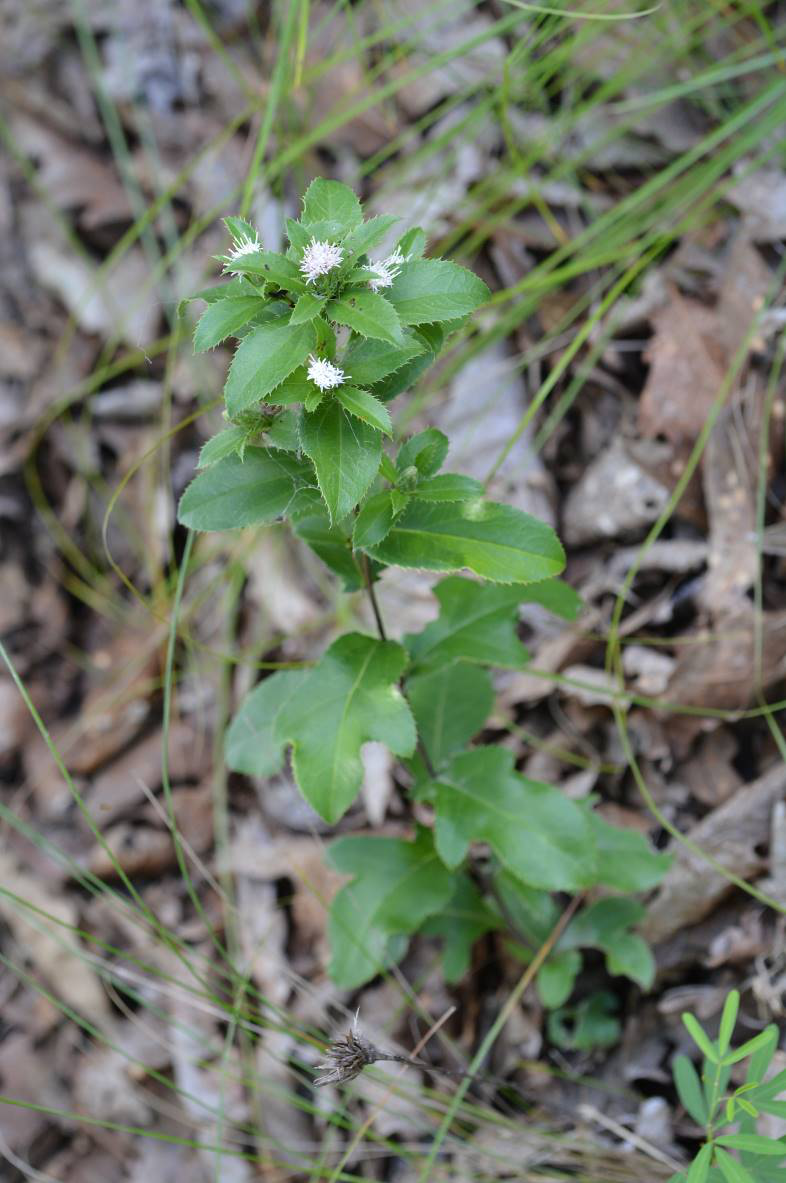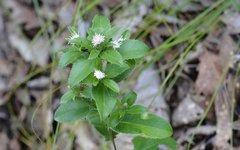
The original plant of Cang Zhu is the Asteraceae family, specifically Atractylodes lancea (Thunb.) DC. or Atractylodes chinensis (DC.) Koidz., which is used medicinally for its dried rhizome. It has the effects of drying dampness, strengthening the spleen, dispelling wind, and relieving cold, as well as improving vision. In our province, Atractylodes chinensis should be cultivated, as its rhizomes have many and distinct oil chambers, commonly known as “Zhu Sha Dian Cang Zhu”. Another similar plant, Guan Cang Zhu, is also widely distributed in our province, but it has fewer oil chambers and is commonly referred to as “Bai Cha Cang Zhu”. Although Guan Cang Zhu is not included in the pharmacopoeia, it is recognized in the national drug standards of Japan and South Korea. Therefore, the quality of this product is often exported to countries like Korea and Japan.
【Habitat and Distribution】
The medicinal plant Cang Zhu is a perennial herb of the Atractylodes genus, found in wild grasslands, under forests, in shrubs, and in rock crevices across Heilongjiang, Liaoning, Jilin, Inner Mongolia, Hebei, Shanxi, Gansu, Shaanxi, Henan, Jiangsu, Zhejiang, Jiangxi, Anhui, Sichuan, Hunan, and Hubei provinces.
【Cultivation Techniques】
1. Seed Selection and Treatment
1. Seed Collection: From late August to early September, collect the fruits in the wild when they are fully mature and have not fallen. Cut the achenes and pile them on the ground to dry for 3 to 5 days. Then, tread and rub them to remove impurities, collect the seeds, and store them in a mesh bag or woven bag to dry.
2. Seed Treatment: One day before sowing, soak the seeds in cold water for 24 hours, preferably adding a small amount of a fungicide like carbendazim to reduce or avoid seed rot after sowing.
2. Site Selection and Soil Preparation
Cultivation of Atractylodes chinensis should be done in semi-shaded, barren hills or slopes, with soil that is loose, fertile, and well-drained, preferably humus or sandy loam. Open field cultivation can be intercropped with corn, with a shade level of about 30% being suitable. Continuous cropping should be avoided, and previous crops should preferably be from the Poaceae family. Heavy, low-lying, poorly drained areas are not suitable.
After selecting the site, prepare the soil, preferably by plowing in the autumn. Generally, the soil should be plowed to a depth of over 30 cm, combined with the application of base fertilizer. For every 667 m², apply 2000 kg of organic fertilizer, and additionally apply 20 kg of nitrogen, phosphorus, and potassium compound fertilizer as a base fertilizer. At the same time, apply soil insecticides and fungicides, then refine and level the soil, making beds or ridges that are 20 cm high and 1.2 m wide, with drainage ditches around.
3. Planting Methods
Cang Zhu can be planted by direct seeding or transplanting seedlings.
1. Direct Seeding: Atractylodes chinensis can be sown in spring or autumn. Spring sowing is done in mid to late May, while autumn sowing is generally done in late September. Use ridge sowing or flat sowing. For ridge sowing, the ridge distance is 65 cm, with a depth of 3 to 5 cm, and a sowing amount of 2 kg/667 m². After sowing, cover and compact the soil with a thickness of 1 to 2 cm. For flat sowing, the row spacing is 25 cm, with a depth of 3 to 5 cm, and the same sowing amount and soil covering as ridge sowing. Keep the soil moist or use mulch to promote seedling emergence.
2. Seedling Transplanting
Seedlings should be cultivated in early May (for spring sowing) or late August to early September (for autumn sowing). The seedbed should be 1.2 m wide and 20 cm high above the ground, with a trench depth of 3 to 5 cm and a row spacing of 25 cm, with a sowing amount of 5 kg/667 m², covered with 1 to 2 cm of soil.
Transplanting: Seedlings that have been cultivated for one year in the seedbed are best for transplanting, with spring transplanting done in late May and autumn transplanting in late September. Dig and plant simultaneously, with trenches opened on ridges, a ridge distance of 65 cm, and a plant distance of 15 cm. Cover the roots with soil, compact after planting, and watering or transplanting during rainy days is beneficial for survival.
4. Field Management
1. Tillage and Weeding: During the seedling stage, attention should be paid to tillage and weeding. For direct-seeded Cang Zhu, weeding should be done promptly during seedling thinning. In transplanted fields, soil should be hilled to prevent the above-ground parts from lodging. Weeding should be done according to field conditions to keep the field free of weeds and prevent soil compaction. In October, hilling should be done to protect seedlings for winter.
2. Water Management: Water should be provided to maintain seedlings during the first year. In transplanted fields, water should be applied after the seedlings green up. At other times, water according to soil moisture conditions. During the rainy season, drainage should be ensured to prevent root rot.
3. Fertilization: After applying sufficient base fertilizer before sowing, from the second year onwards, fertilization should be done every year in June to July, applying 15 kg of diammonium phosphate and 15 kg of potassium sulfate per 667 m².
4. Bud Removal: To concentrate nutrients for root growth, starting from the second year after planting, flower buds should be removed promptly from non-seed plots. For plants intended for seed production, larger flower buds can be left, but other buds should be removed to ensure the seeds are large and full.
5. Pest and Disease Control
(1) Diseases
Root Rot: In the early stages of the disease, the plant’s top wilts, and the growing point is damaged, causing the entire plant to wilt and eventually die. The affected area shows longitudinal cracks in the epidermis, rust-colored, with the main root rotting, and in humid conditions, a pink substance appears at the base of the stem.
Control Methods: Before or at the early stage of the disease, use 1000 billion spores/g of Bacillus subtilis wettable powder diluted to 1500 to 2000 times, or 5 billion CFU/g of Bacillus thuringiensis suspension diluted to 4000 g/667 m² and spray on the base of the stem with a 100-fold dilution. Continuous application should be done twice, with an interval of 8 to 10 days.
(2) Pests
1. Aphids: Adults and nymphs suck the sap from tender leaves and stems, severely affecting growth and causing yield reduction.
Control Methods: Physical control involves using yellow boards to trap adult aphids, with 30 to 40 yellow boards hung per acre. For chemical control, use 0.3% Matricaria chamomilla water solution at 150 g/667 m², 2.5% Fish Poison emulsion at 150 g/667 m², or 1.5% Pyrethrum emulsion at 30 ml/667 m², sprayed evenly during the peak occurrence. Alternatively, use 0.3% Matricaria chamomilla water solution at 150 g/667 m² or 2.5% Fish Poison emulsion at 150 g/667 m² for spraying.
2. Cutworms: Newly hatched larvae feed on the tender leaves and growing points of host seedlings, while adults feed on the stem base at the soil surface, potentially cutting off tender stems.
Control Methods: Agricultural and chemical control measures should be combined. First, improve field management conditions, remove weeds, and reduce the transitional hosts for cutworms, eliminating newly hatched larvae. When localized damage occurs, manual soil turning can capture and eliminate larvae. Use insect traps or sugar vinegar solutions to lure and kill adult cutworms. For chemical control, apply 0.3% Matricaria chamomilla wettable powder at 7000 g/667 m², or pile grass clippings every 5 m, spraying the base with a 300-fold dilution of 80% DDT to lure and kill larvae.
6. Harvesting and Processing
The best harvesting age for Atractylodes chinensis is 3 years, with the optimal harvesting period in autumn. After digging, remove the stems and leaves and dry until 40-50% dry, then pack into baskets, knocking off some of the fibrous roots, with the skin appearing dark brown. When dried to 60-70%, knock again to remove all old skin. When fully dried, knock once more to achieve a yellow-brown skin. Atractylodes chinensis can be harvested in both spring and autumn.
【Economic Benefit Analysis】
|
Cang Zhu |
|
|
Planting Method: |
Seed sowing or seedling transplanting |
|
Recommended Planting Land: |
Loose sandy loam |
|
Growth Duration: |
3 to 4 years |
|
Seed Usage: |
2 kg/acre |
|
Seed Price: |
1000 yuan/kg |
|
Seedling Usage: |
7000 plants/acre |
|
Seedling Price: |
0.5 yuan/plant |
|
Land Price: |
400 yuan/acre·year |
|
Labor and Fertilizer Input During Growth: |
1200 yuan/acre·year |
|
Yield: |
250 to 300 kg/acre |
|
Price: |
50 yuan/kg |
|
Value per Acre: |
12500 to 15000 yuan/acre |
|
Net Profit: |
3000 to 5500 yuan/acre |
Note: Due to uncertainties in land, seedling, agricultural inputs, labor costs, medicinal herb yield, and purchase prices, this economic benefit analysis is only an estimate and for reference only. The land area unit “acre” refers to 667 square meters.


